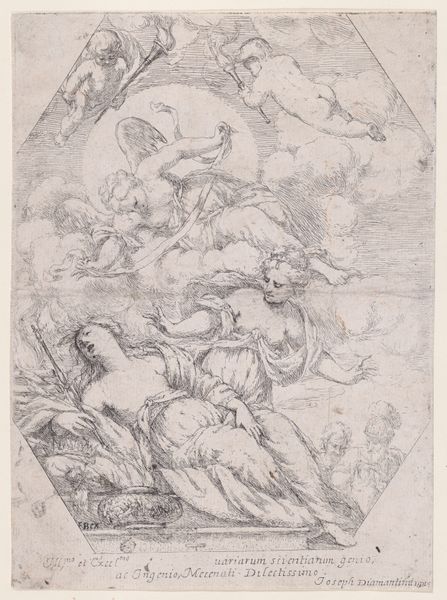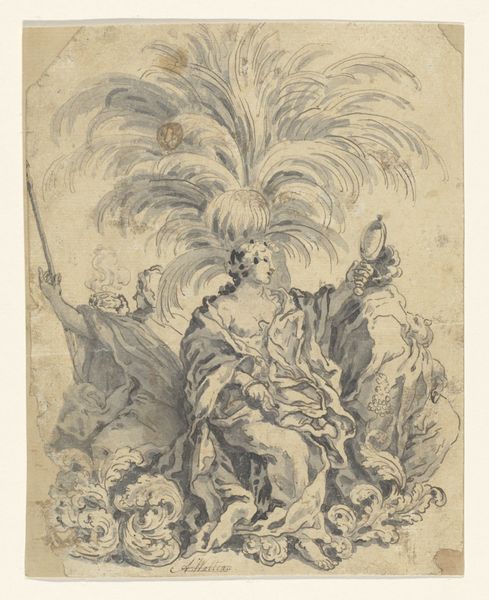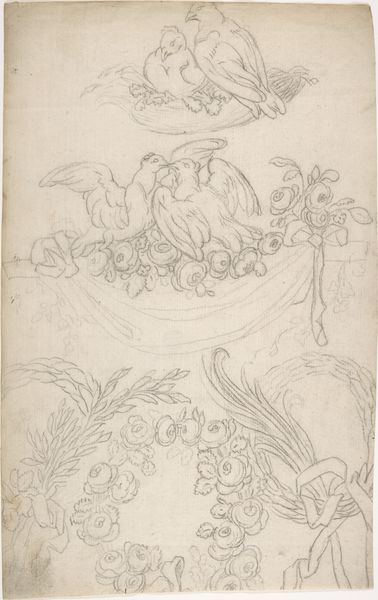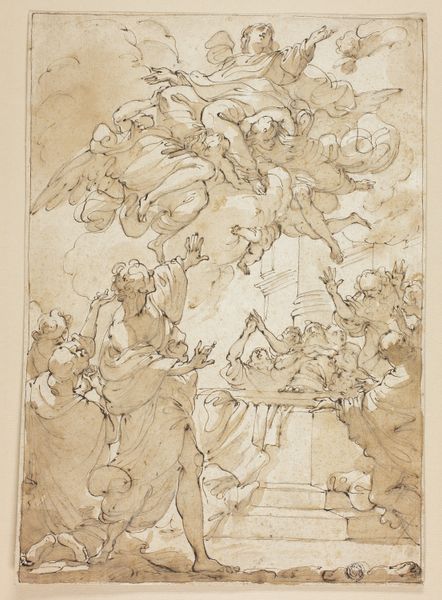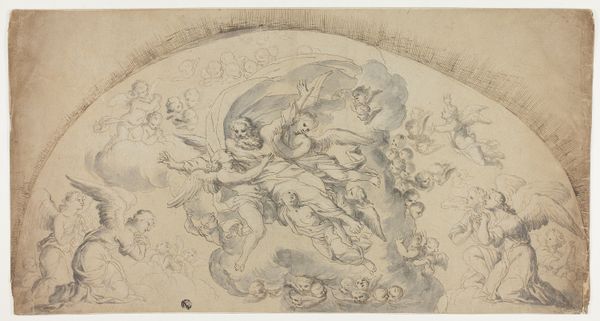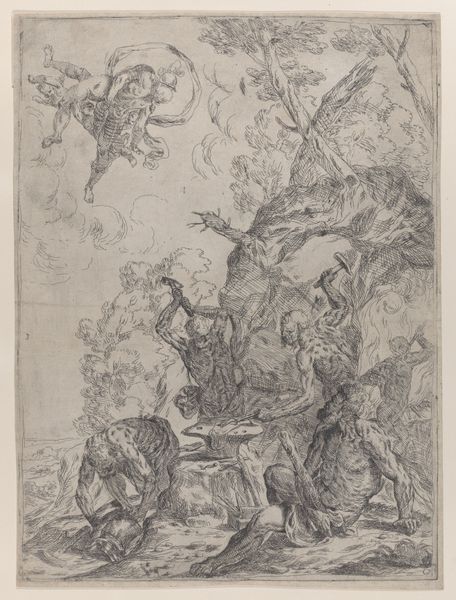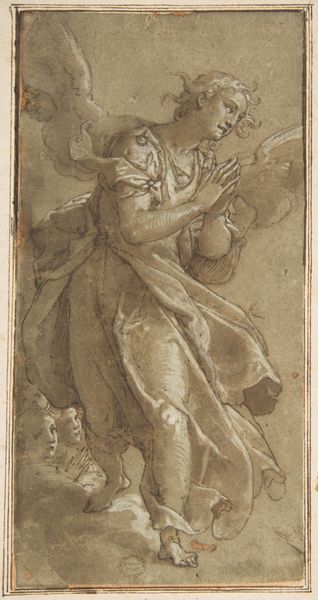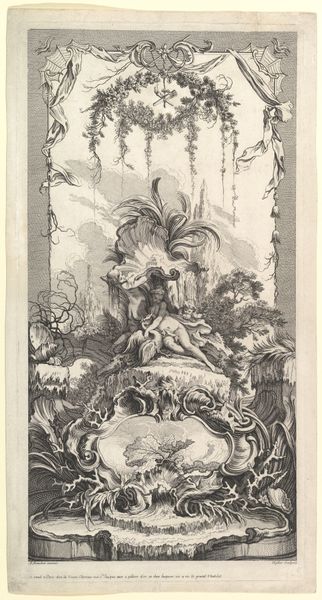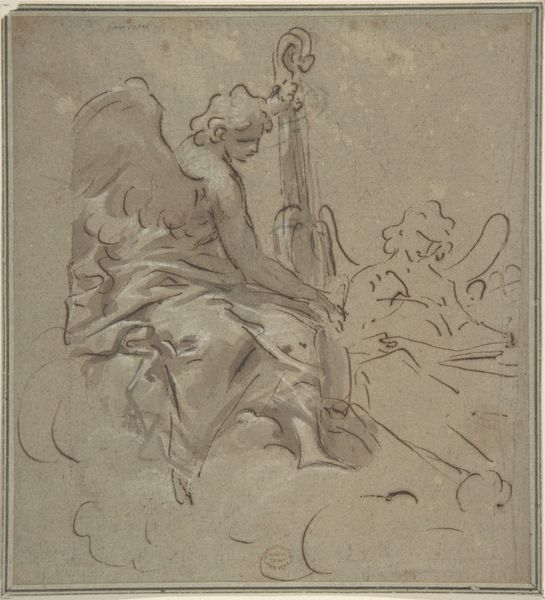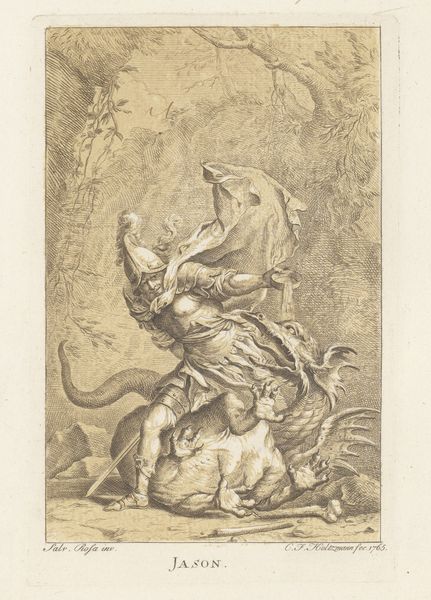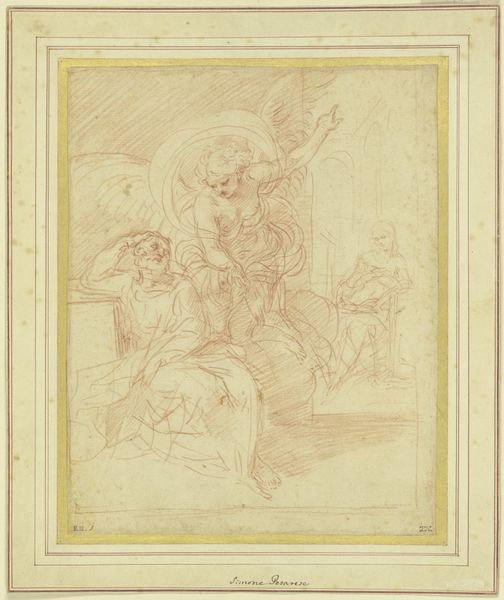
drawing, print, pencil
#
drawing
#
baroque
# print
#
figuration
#
pencil
#
history-painting
#
angel
Dimensions: 10 3/8 x 8 in. (26.3 x 20.3 cm)
Copyright: Public Domain
Curator: Immediately striking, isn't it? This ethereal scene, done in pencil, depicts a swirling upward momentum that fills the picture plane, but gives the overall impression of lightness. Editor: It really does float. What are we looking at precisely? Curator: This is "The Assumption of the Virgin," a drawing attributed to Nicolas de Plattemontagne, dating from sometime between 1645 and 1706. You can find it here at the Metropolitan Museum of Art. It captures Mary’s ascent into heaven. Editor: The swirl of angelic figures certainly suggests a Baroque dynamism, though in pencil and chalk, rather than vibrant colors. How would this have functioned? Curator: Drawings like this were often preparatory sketches, envisioning a larger painted altarpiece perhaps. Think of it as the artist working through the iconography, establishing the key elements of the narrative. Here we have the Virgin, her arms outstretched, being lifted by angels amid clouds. Editor: What fascinates me is how these representations both shape and reflect cultural beliefs. The assumption is such a powerful symbol – a celebration of Mary's purity and her unique role. How would the Church have used an image like this to assert doctrine, do you think? Curator: The visual language is carefully constructed. Consider the arrangement of the figures – a hierarchy with Mary at the apex, radiating serenity, as if floating on faith itself. The supporting angels at the base seem to struggle with the earthly, physical effort. Note how her gaze is lifted to something unseen, conveying not just elevation but a state of grace, suggesting a link between terrestrial life and divine ascension. Editor: It’s interesting, though, how earthbound those angels at the bottom appear to be. They’re almost straining to lift her, yet some of those cherubic faces up above are simply observing, angelic onlookers to the miracle. The drawing reveals a fascinating intersection of physical exertion and transcendent belief. It highlights the paradox of the Assumption – the earthly being taken to the heavens. Curator: The image operates at various levels. It shows earthly action as well as heavenly destination. A depiction like this might have shaped the imagination of believers by portraying the unseen. What impact might a constant stream of similar images had, especially for a mostly illiterate public? Editor: These are the sorts of images that defined much of their worldview and experience of the divine, I expect. Visual communication and these iconic motifs – they still resonate, don’t they? Curator: Absolutely. Though we may no longer share the specific beliefs represented, we recognize the desire for transcendence and the emotional power of that symbolism. Editor: Looking at Plattemontagne's "Assumption," I see not just religious doctrine, but a carefully constructed piece of visual rhetoric. The artist invites you not simply to witness, but to participate in a collective expression of hope and faith. Curator: Exactly. It is the continuous transformation of images over the centuries to explore and reshape human experience.
Comments
No comments
Be the first to comment and join the conversation on the ultimate creative platform.

